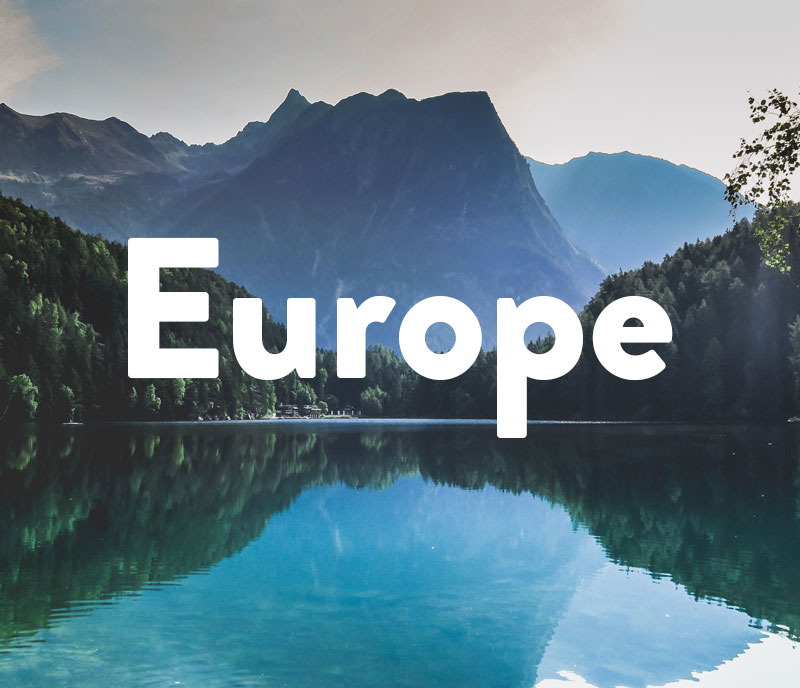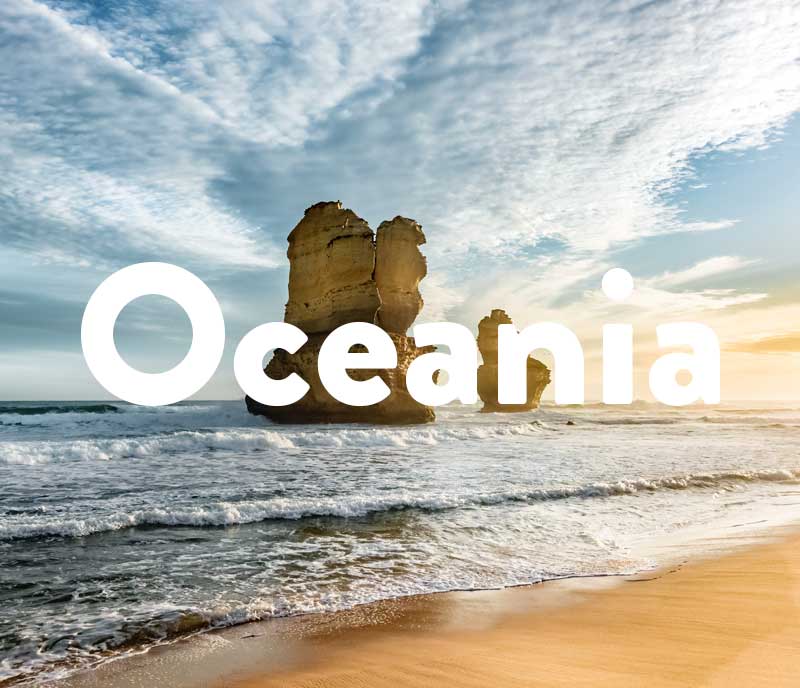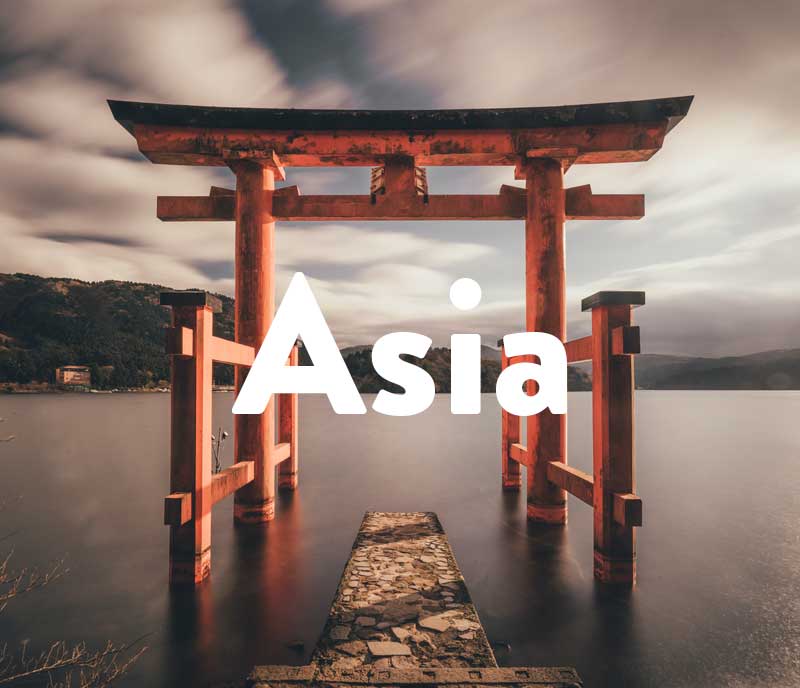A visit to Saudi Arabia is like no other. A kingdom brimming with hidden treasures, dramatic landscapes and steeped in culture. It extends from the towering red sand dunes of the Rub al-Khali desert to the modern metropolis of the capital, Riyadh. This vast land, still relatively uncharted to tourists, will captivate you with its striking architecture and natural scenery. Not to mention the fact that it’s the birthplace and spiritual home of Islam. Unsurprising then, that the Grand Mosque in Mecca and the Prophet’s Mosque draw millions of Muslim tourists every year.
Dive into our (free) travel guides below!
.
.
.
.
.
.
.
.
The Key Info
Seven countries sit on the Arabian Peninsula – Saudi Arabia is the largest of them. They include Iraq, Jordan, Kuwait, Oman, Qatar and Yemen.
Riyadh and Jeddah are some of the largest cities in the middle east and are huge economic hubs. But delve beneath the skyscraper-topped cities and you will discover hidden wonders. Fascinating geological and archaeological sites provide a unique look into pre-Islamic Arabia. Meanwhile, adventurers are spoilt for choice with mountain hikes, scuba diving and dune buggy riding, all in spectacular locations. This two million km² of distinct, yet mysterious, land is simply yearning to be explored.
Country in Numbers
- Population number: 33,700,000
- Total size of the country: 2,150,000 km²
- Capital city: Riyadh
- Currency: Saudi Riyal (SR)
- Main Language: Arabic
- Religion: Sunni Muslims 85%, Shia Muslims 10%, Roman Catholic Christian 3%, Other 2%, Hindu 1%
The Largest Cities in Saudi Arabia
1. Riyadh – Population: 6,506,700
Arabian tradition and heritage collide with the future in Saudi Arabia’s capital. State-of-the-art skyscrapers and glistening shopping malls surround the city’s historic landmarks. The most famous of which is Masmak Fortress, a huge clay fort that played a major role in the consolidation of the Saudi kingdom. To discover more Arabian culture and history, visit the local National Museum or immerse yourself in the birth of the Saudi state at Al Bujairi Heritage Park. Here, a traditional Saudi dining experience and a walk around the old city ruins will feel like you have stepped back in time.
2. Jeddah – Population: 3,976,400
An important city for travelers, traders and pilgrims throughout the years, Jeddah, one of the most liberal cities in the country, mixes old and new. Also known as the gate to Mecca, millions of pilgrims touch down in this bustling metropolis on their way to the Islam’s holiest city. But Jeddah’s white-sand beaches, historic district and world-class cuisine make this waterfront city a destination in its own right. Lavish shopping malls will keep you entertained for hours – away from the intense summer heat. If the crowded city life gets overwhelming, take time out by visiting the Floating Mosque (or Al-Balad) – one of the oldest regions in Jeddah.
3. Mecca – Population: 1,919,900
Spelled ‘Makkah’ in Saudi Arabia, Mecca is a one hour drive inland from Jeddah. Be aware though that only Muslims may enter this city – the penalty for trying anyone is deportation. Islam is home to the Masjid al-Haram (Grand Mosque), where millions of Muslims complete the Hajj pilgrimage each year. The sacred Kaaba, at the center of the mosque, is thought to have been built by Prophet Abraham and his son Prophet Ishmael. Mountains surrounding the city also hide certain holy sites for pilgrims to visit. The Cave of Sawr is located deep in the southern Jabal Rahmah mountain and is where The Prophet hid from the Quraysh tribe.
4. Medina – Population: 1,271,800
The second holiest city in Islam is the Prophet Muhammad’s final resting place and where he taught, after being exiled from Mecca. The Prophet’s Mosque and burial site are only accessible to Muslims. However, the rest of the Medina region is filled with hidden treasures. The Hejaz Railway was built by the Ottoman empire to connect the holy city with Istanbul. The beautiful station is now home to Islamic exhibits, while old engines and tracks can be seen half-buried in the sand. Other highlights include the Dar Al Madinah Museum and the Quba Mosque, one of the oldest in the world.
5. Hofuf (Al-Ahsa) – Population: 1,136,900
Also known as Al-Ahsa, one of the largest natural agricultural oases in the world has recently been entered on the UNESCO World Heritage List. Not far from Saudi Arabia’s eastern coast, Al-Ahsa is home to over 150 hot and cold springs, thought to have healing properties due to the high concentration of minerals. A climb up the nearby Qara Mountain takes you into distinct caves that are thought to have sheltered Prophet Abraham. Once out in the open, unobstructed views await of the oasis beneath.
Top Tourist Attractions
1. Madain Saleh
Madain Saleh archaeological site is often described as the second Petra, because of the striking similarity with the magnificent Nabataean city in Jordan. The mysterious ruins and unusual rock formations cover a huge area and can be entered next to the old Ottoman Hejaz Railway station. Any history fan will be fascinated wandering the Graeco-Roman architecture, exploring the 131 ancient tombs and seeing a glimpse into first-century life.
2. Edge of the World
This spectacular spot, 300 meters from the ground in the Acacia Valley, lives up to its name. The popular viewing point at the edge of the Tuwaiq Cliffs provides unobstructed views across the empty valley floor, all the way to the horizon. These valleys were once part of an ancient trade route from Yemen. Nowadays, hikers from all the over world come to explore the steep rugged route to the top. Visit at sunrise or sunset for a magical atmosphere, or even better, camp under the starlit sky.
3. Sky Bridge at Kingdom Centre Tower
In the heart of the capital, the Kingdom Centre Tower is one of the most striking skyscrapers you will ever see. The unique upside-down arched building is 302 meters high and has 99 floors. The very top floor is home to the Sky Bridge offering panoramic views across the city in both directions. The visit starts with a trip through the towers luxury shopping mall before a high-speed lift to the 77th floor. Here is where you can indulge in a fine dining experience, 180 meters above sea level at the Spazio77 restaurant. A second lift will transport you to the iconic viewing gallery to see the country’s capital from a spectacular angle.
4. Wahba Crater
Al Wahba Crater is a geological wonder in the middle of the Saudi Arabian desert. The 250 meters deep, 2km wide rocky hole looks like it was created from a meteorite. In fact, it is a volcanic crater formed by an eruption. Look down from the crater’s rim or climb the rocky trail down to the center for a unique sight you are unlikely to see again. The alien landscape is completed when a milky lake, surrounded by palms and shrubs, emerges with rainfall.
5. Al Kharrarah National Park
Al Kharrarah National Park is one of the best places to enjoy the Arabian Desert. Lake Kharrarah is one of the country’s most loved natural sights, a perfect contrast to the surrounding red sand dunes. The lake is a great place to take a break from the city. Take a picnic and enjoy the variety of wildlife that the landscape attracts. If you are a thrill-seeker, then sand-boarding, quad biking and dune bashing might be more your style. Al Kharrar has something for everyone.
Best time to travel
Saudi Arabia’s desert climate means summer months (May to September) consist of intense heat and minimal rainfall. Temperatures often exceed 40 degrees Celsius, so you will spend most of your visit trying to find shelter. For a more pleasant experience, winter is the best time to visit. The cooler daytime temperatures of around 25 degrees Celsius mean you can explore the country’s outdoor attractions without the need to shelter. Just watch out for the occasional rain shower.
Safety for travelers in Saudi Arabia
Saudi Arabia’s strict laws may put you off at first, but the country has some of the lowest crime rates in the world. There are strict punishments for any sort of LGBTQ activities, as it is illegal. If you are an LGBTQ traveler, obey the laws and customs and you are unlikely to have any issues. Sex segregation is common. You will find separate seating areas and entrances dividing mainly single men and families. Solo women travelers may find it difficult, as the legal requirement for a male chaperone in many places restricts what you can do. Solo male travelers should also not be accompanied by a woman who is not a family member or his partner. Researching the customs and respecting the culture should provide you with a trouble-free trip. For more information please see the Visit Saudi website here.
Holidays in Saudi Arabia
Saudi Arabia follows the Islamic calendar consisting of 12 months, but 354 or 355 days. The country has a National public holiday as well as two main holiday periods: The Feast of the End of Ramadan and The Feast of the end of Hajj. Each festival is officially observed for 10 days and usually consist of holidays for 10-12 days.
- 1-3 Shawwal (Islamic calendar): Eid al-Fitr (The Feast of the End of Ramadan)
- 9-12 Dhul-Hijjah (Islamic calendar): Eid al-Adha (The Feast of Sacrifice)
- 23rd September: Saudi National Day
Visa Requirements
Saudi Arabia has recently created a new tourist visa. It allows citizens of 49 eligible countries to stay in Saudi Arabia for up to 90 days. The simplified process to obtain a visa can be done online or upon arrival in the country, both require payment of SAR 440. Australia, China, the UK, the USA and many European countries are eligible for the visa. To apply and see the full list of eligible countries, click here for the official Saudi Arabia e-visa website. For all other countries, check with your local embassy for more information.
Currency
Saudi Arabian Riyal (SAR) is the country’s official currency. One Riyal is the equivalent of 100 halalas and notes come in denominations of 1, 5, 10, 50, 100 and 500. For those who like to use credit and debit cards, you will have no problem as they are widely accepted. It is best to carry some cash, especially when going out of the cities. ATMs and currency exchange bureaus are widespread. Hotels offer poor rates so it is best to avoid changing here if possible.
Dos and Don’ts in Saudi Arabia
| Do | Don’t |
| Respect local customs: Saudi Arabia is a conservative Muslim country. As you would anywhere else, respect the local customs. Make sure you research these thoroughly, as there are many rules regarding dress codes, prayer times and sex segregation. | Drink alcohol: Alcohol is prohibited in Saudi Arabia. There are strict penalties for trading and possessing alcohol, so don’t bring it into the country either. |
| Prepare for the desert: Due to the lack of tourism infrastructure, paths can be of harsh terrain and getting there can require expert knowledge. Get yourself a guide and take plenty of supplies for the day. | Try and enter Mecca or Medina as a non-muslim: You could be deported or face a large fine. |
| Learn basic Arabic: Most people do speak English, so you will have no problem communicating. Though learning a few basic Arabic words will help you in areas where English is less common. | Eat or drink in public during the month of Ramadan: As many are fasting, it is seen as impolite to indulge in front of others. |
Must-Haves for Your Packing List!
- Comfortable shoes: Many of the country’s tourist attractions require walking. Make sure your shoes are comfy and suitable, especially if you are planning on visiting the mountains or desert.
- Modest clothes: Both men and women should dress modestly. The dress code for women was recently relaxed, so women now do not need to wear a headscarf. Though make sure to take clothes that cover legs and arms.
- Sun protection: Sunscreen needs to be applied regularly to avoid skin damage. The Arabian sun is fierce so choose a high SPF level.
- A light jacket: The shaded cool shopping malls are a haven after a few hours in the hot sun. But after a while, they start to feel quite cold. A light jacket is perfect for air-conditioned buildings and evenings.
Secret Tips From Bloggers
Explore the natural sights. The country’s magnificent scenery has escaped the limelight because of the lack of tourism. Don’t just stick to the cities, explore the hidden natural and archaeological landscapes Saudi Arabia has to offer. – Against The Compass
Taste traditional Saudi dishes. The unique cuisine is influenced by the surrounding middle east but with an added twist. Look out for Tharid – spicy lamb stew, Jareesh – crushed wheat porridge and Murtabak – stuffed pancake. – Lost With Purpose
Scuba diving might not be the first thing that comes to mind when thinking of a visit to this mostly desert country. However, you’ll find beautiful coral gardens and amazing wrecks along both the Persian Gulf and Red Sea coasts. These spectacular diving locations are much quieter than Egypt’s crowded locations too! – Where Is Tara
Top 7 Instagrammable Places
- #Albalad (21.9k)
- #Emptyquarter (17k)
- #Qubamosque (10.7k)
- #Madainsaleh (8.2k)
- #Edgeoftheworldriyadh (1.8k)
- #Alfaisaliahtower (1.3k)
- #Wahbacrater (247)
Fun Facts about Saudi Arabia
- Saudi Arabia is building the world’s tallest building. Construction started on the Jeddah Tower back in 2013 but has since slowed down. There are plans for construction to recommence in late 2020. When finished the tower will be at least 1,000 meters tall.
- Over 95% of Saudi Arabia is desert land. The country is also home to one of the largest deserts in the world, Rub’ Al Khali.
- It does snow in Saudi Arabia. Despite the desert climate throughout most of the year, temperatures can drop to freezing during winter. That means northern mountains and even desert land can be covered in a white blanket of snow.
- Saudi Arabia forbids witchcraft and sorcery. Harry Potter books are banned and the country created an anti-witchcraft unit in 2009.
Keep going…
- Dresden and Saxon Switzerland – The perfect weekend trip
- Vacation in Carinthia: Experience the sunny side of the Austrian Alps
- Craft Unforgettable Postcards: Say Goodbye to Writer’s Block with AI (Coming soon!)
- Discovering the Charm of San Antonio: 5 Hidden Must-Visit Places
- Off to a Texas adventure: Our trip to San Antonio, Fredericksburg and Bandera – Part 2







